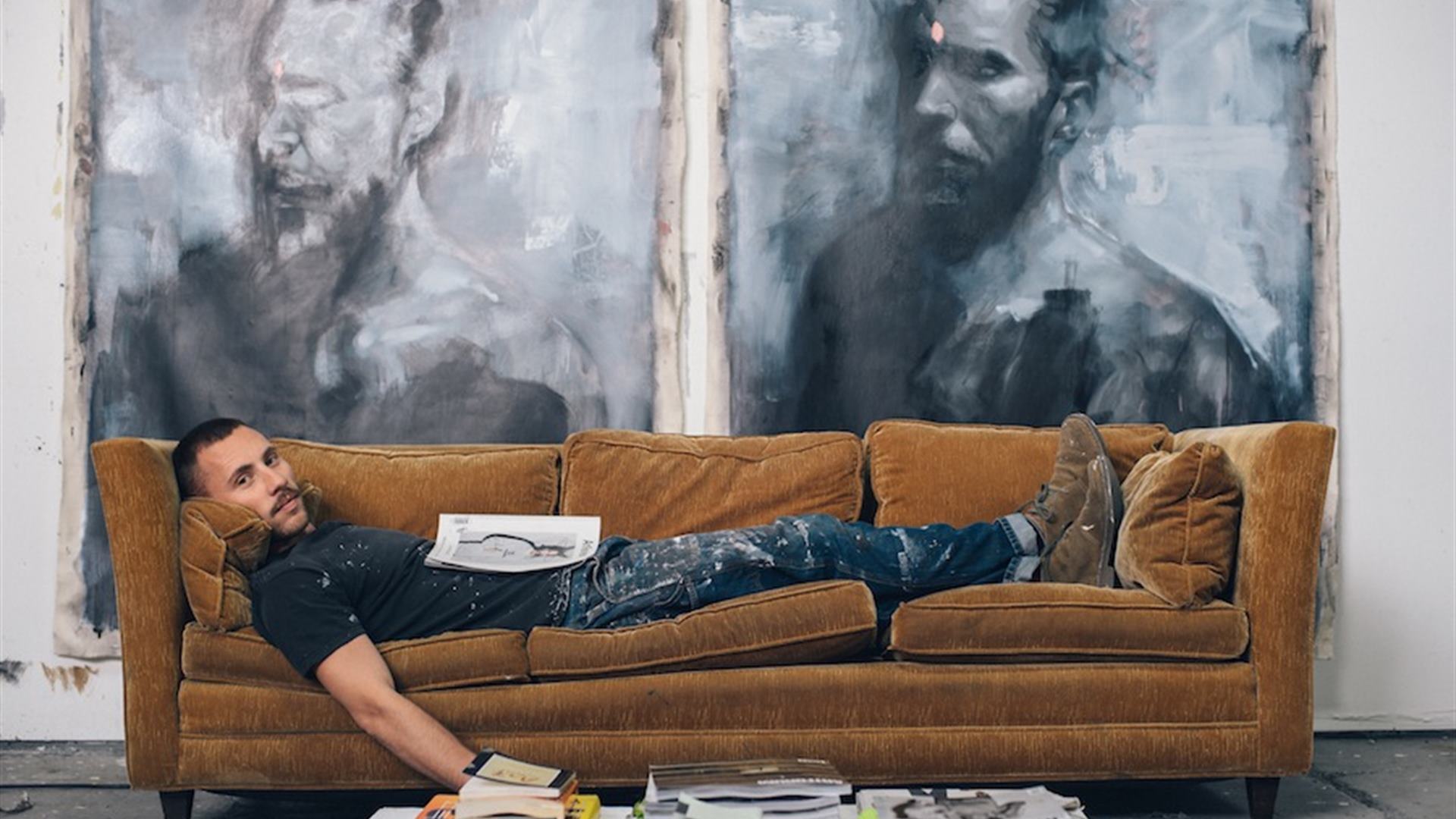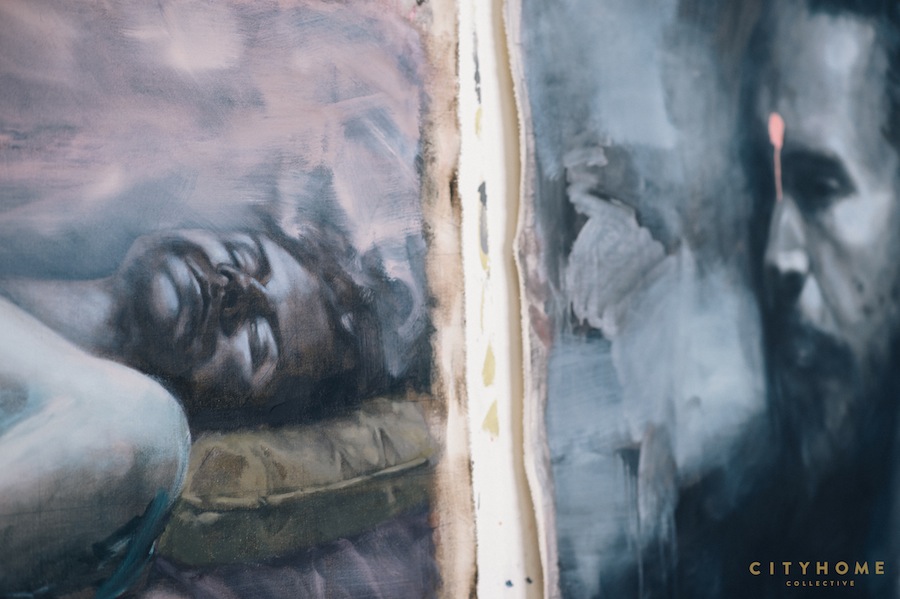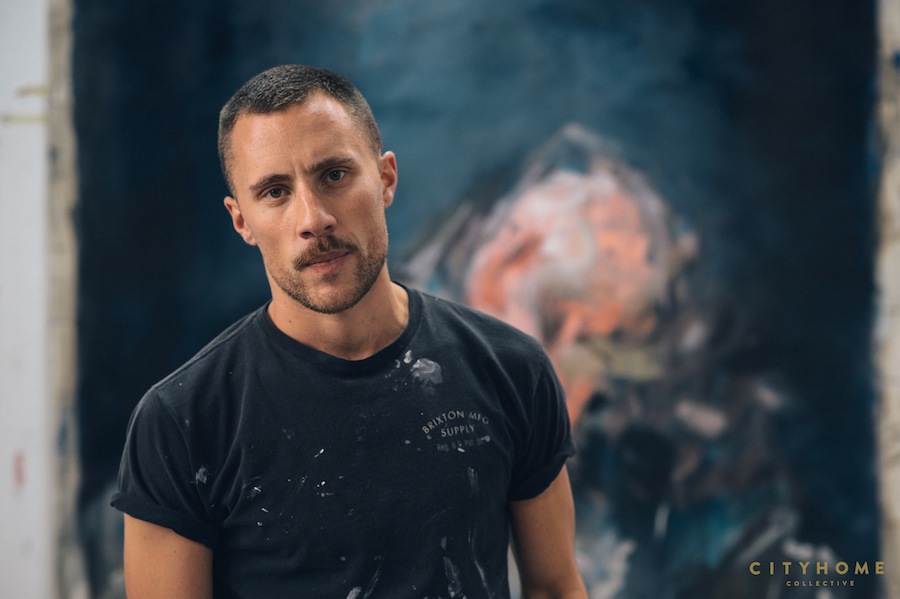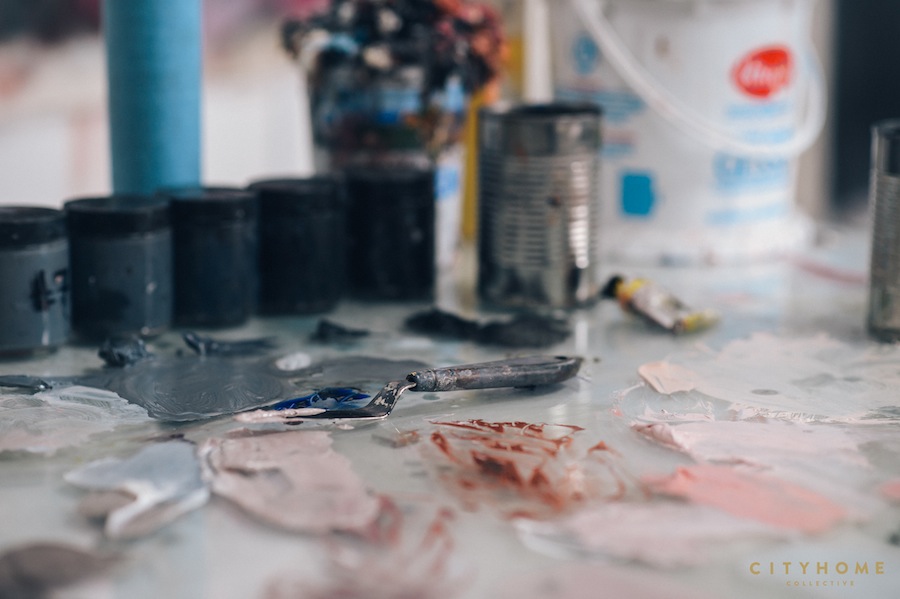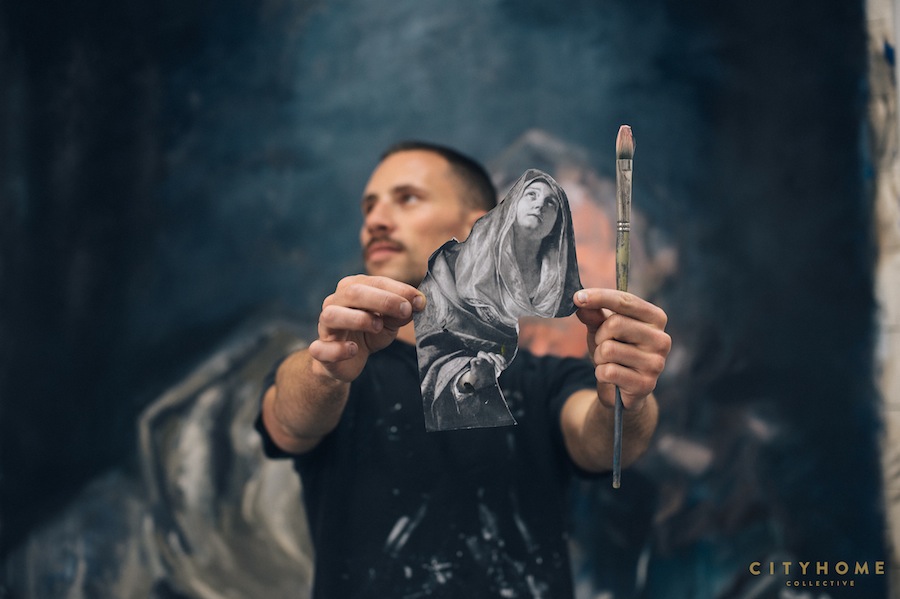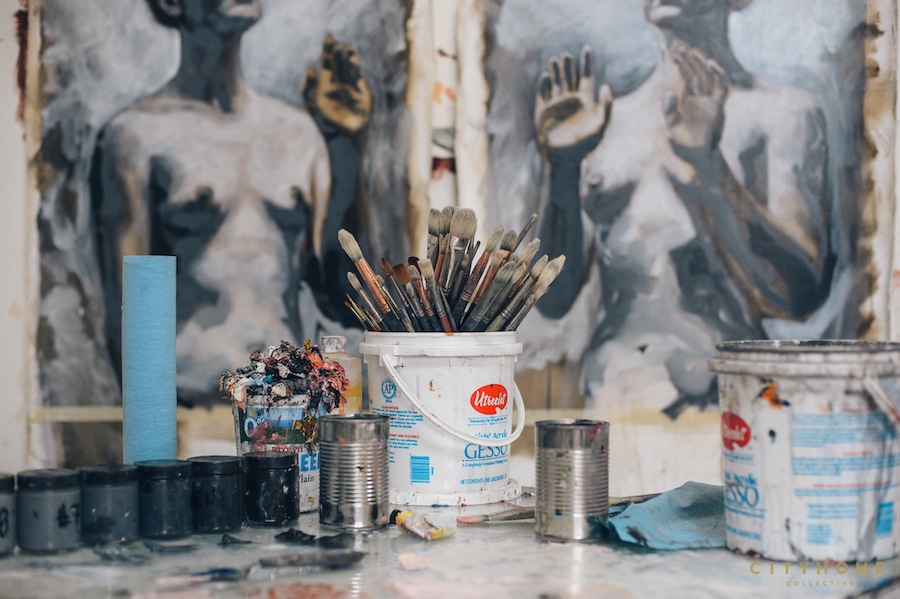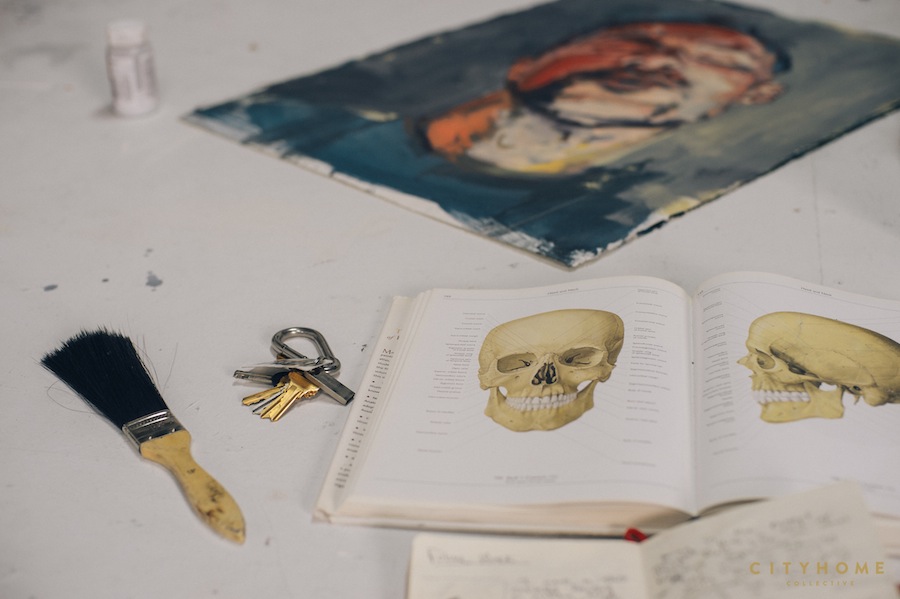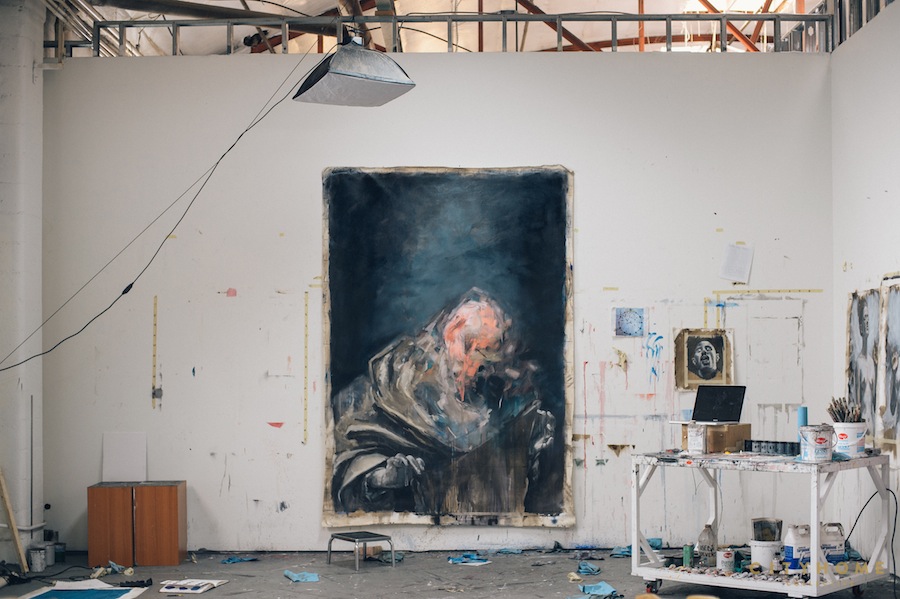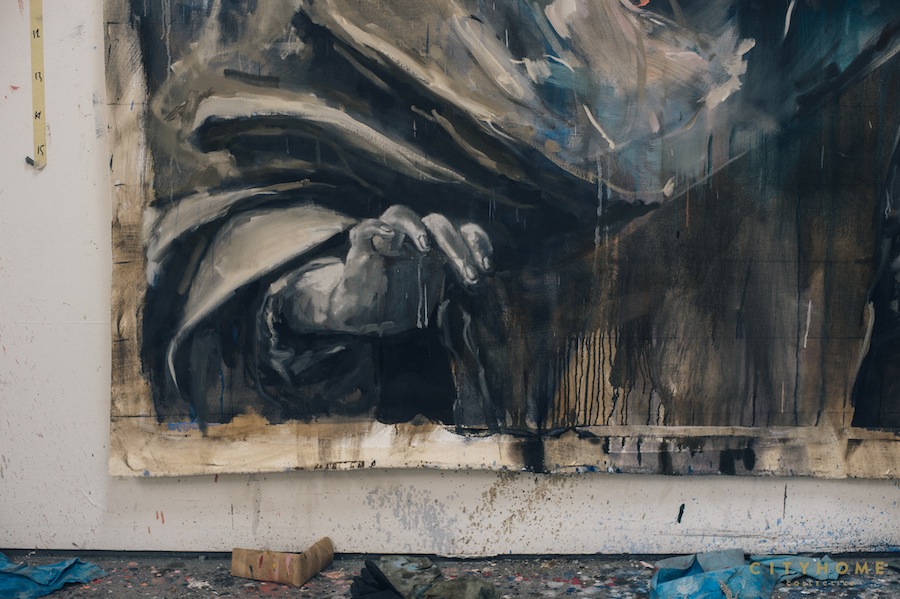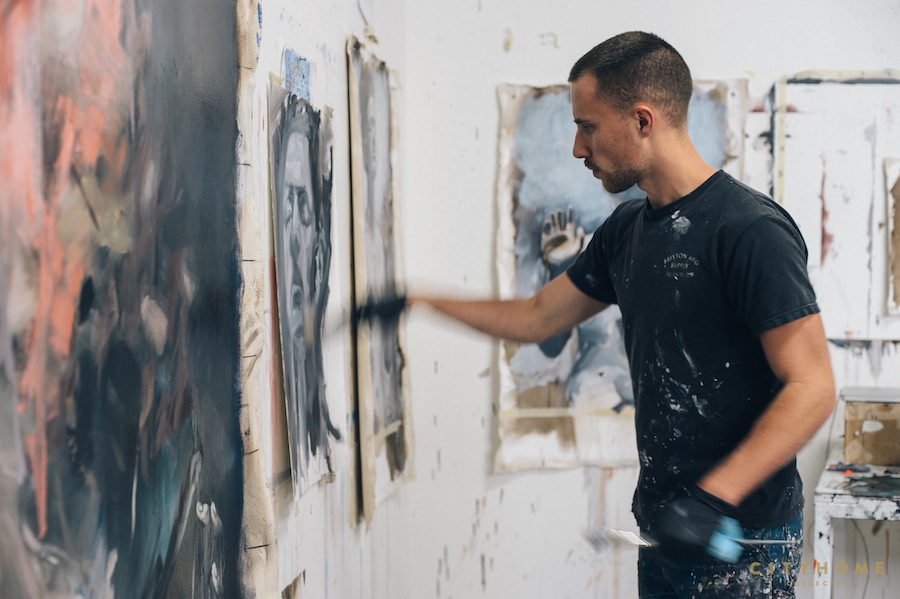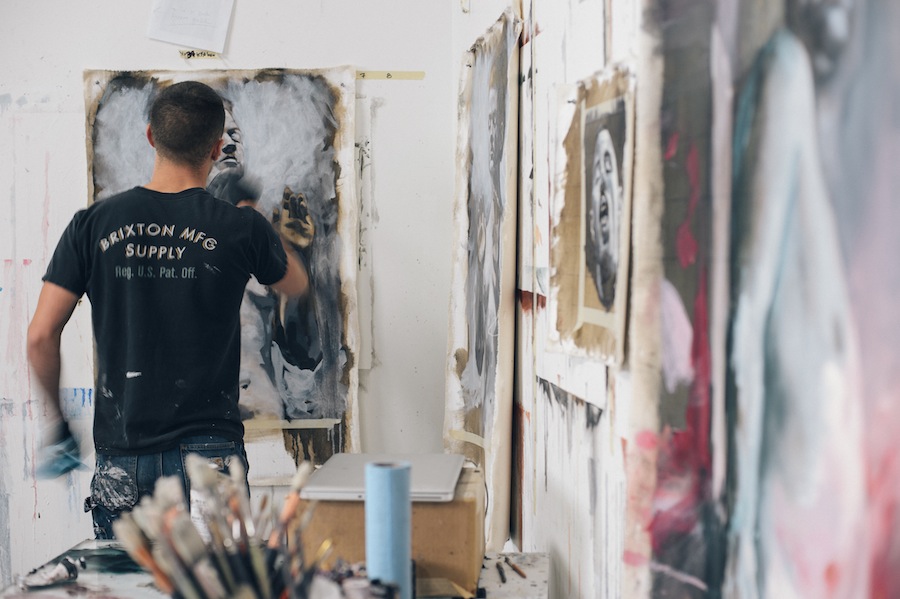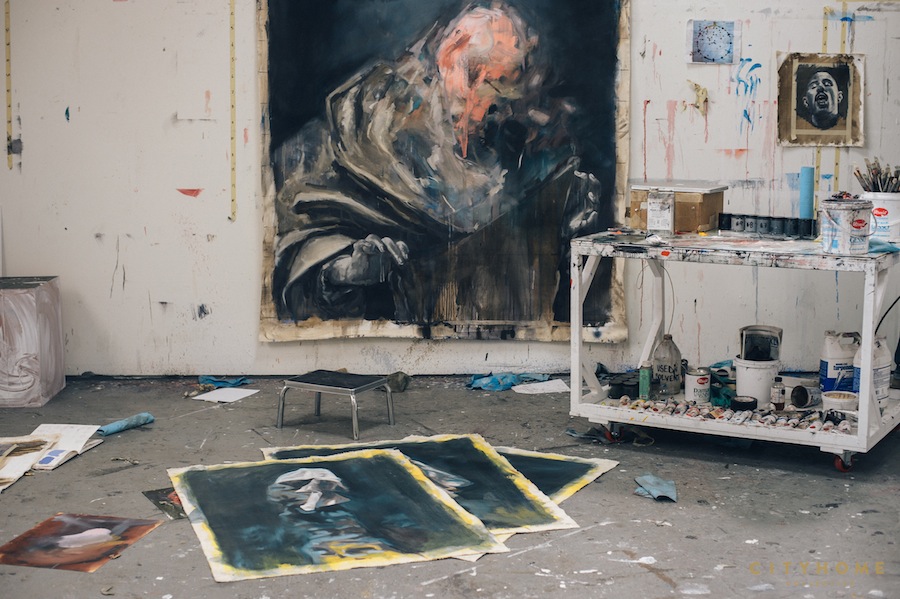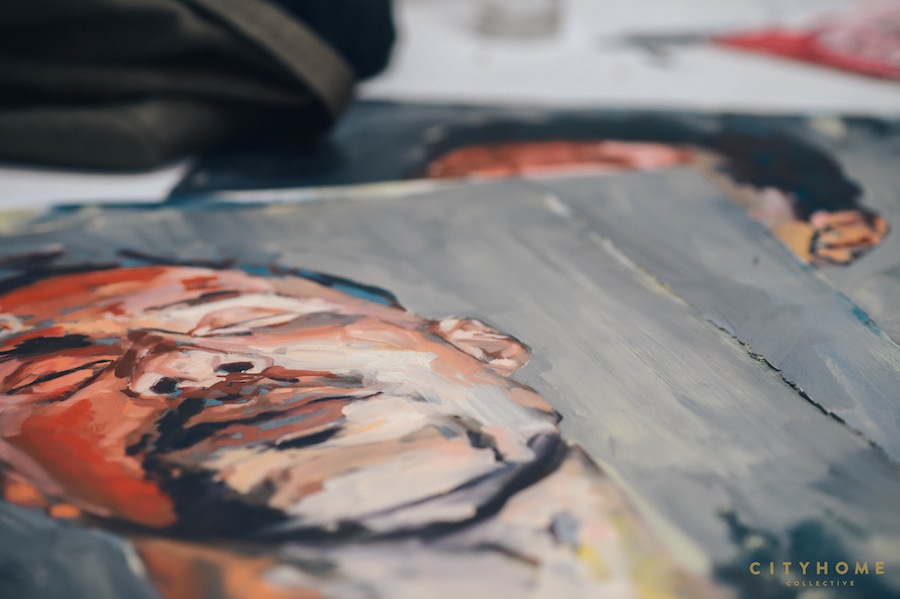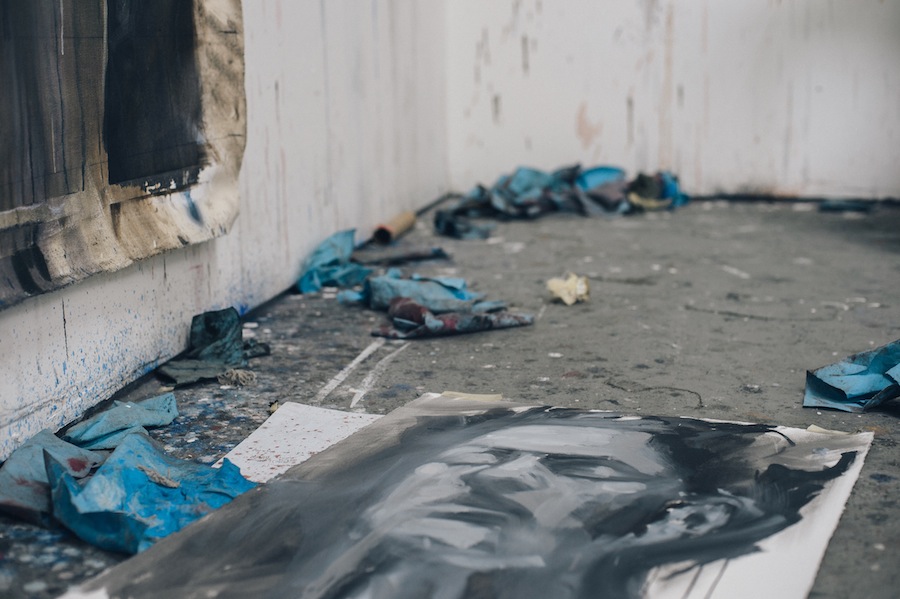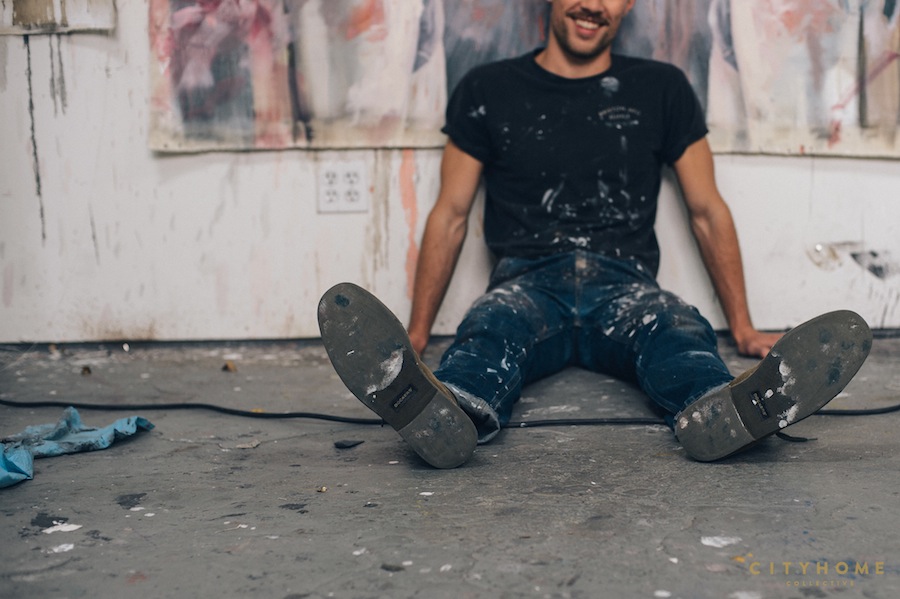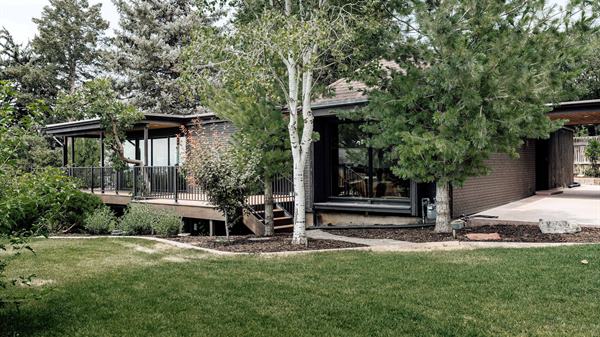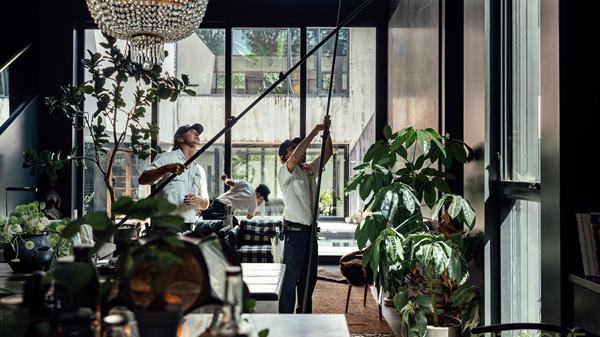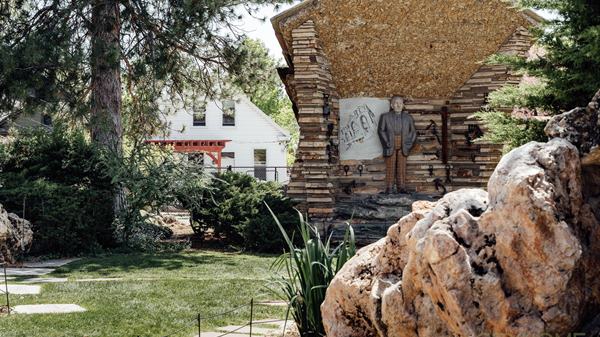COLLECTIVELY, we're a tad biased when it comes to the work of Andrew Moncrief, but that doesn't diminish the fact that this is an artist to watch. A recent transplant from Montreal, SLC should count herself lucky to gain a talent of this stature (and jawline). You know that buzzy feeling you get when you're around a person who's clearly creating the stuff of genius? Yes, that. That's the feeling that Andrew's work evokes. As a designer for cityhomeCOLLECTIVE, I'm frequently tasked with curating art for client's homes. It's one of the most important elements of the final design in any given project, and I spend a good part of my day gazing at contemporary art.
Nevertheless, I was floored the first time I walked into Andrew's studio.
Andrew is a figurative painter who has a way of working with his medium--the subjects start to dissolve into sheer paint and unexpected bursts of color, such that the painting toes the line of being completely about its subject, and yet not about it at all. It's just the sheer joy of the brushstrokes. There’s a complexity and an agony to watching an image corrode in the same way that Picasso’s disturbance of the picture plane rocked the art world.
It’s thrilling and haunting
What you assume to be steadfast and true begins to dissolve, and it feels a bit like magic to watch his paintings unfold. Andrew and I have discovered a mutual love of discussing all things paint and painters, and I’ve been lucky enough to pay him a few studio visits (I’ve even commissioned him to do a piece for one of my clients)…naturally, it was a treat to ask him a few questions about his arresting work...
I'm always interested in the moments that convince an artist to become an artist. What's your earliest memory of being moved by a piece of art? My mom was and is still extremely artistic, so I always had that energy around me growing up; we were always doing some sort of arts-and-crafts project after school and on the weekends. Though I think that crux moment for me came when I was about 13 years old--one weekend, my mom took me to Vancouver and we stayed with her best friend who, at one point, took us to meet artist, Dave Edwards. His studio was in Gastown (the oldest part of the city), full of brick buildings and slightly-dodgy streets. We rode a sketchy freight elevator up to a massive, high-ceiling loft that was absolutely FULL of paintings. There was a smell of solvents and paint and resins that I was totally unfamiliar with, and he had two huge 4x6 etherial, abstract landscapes glazed with roofing tar and propped on the wall. They were beautiful, and they made me want to make art like that. I wanted to have a studio space like that. It's ingrained in my mind as the first experience of what a real artist looked like...what a real art studio was. Dave and I have become really close friends over the years.
Obvi, your paintings are figurative. But instead of luxuriating in the beauty of the human form when I look at your work, I feel like a voyeur that can't look away. It's an exciting and unique relationship you've created. Is it intentional, creating an experience for the viewer? I've always been interested in a more challenging idea of what is beautiful, and more often than not, this has manifested itself in a way that has been interpreted as somewhat off-putting. I often think of Francis Bacon's distorted heads and his desire to paint the perfect scream, or Adrian Ghenie’s ostensibly grotesque “Pie Fight” series (of people who have had pies thrown in their face). In my previous work, I often sourced images from facial traumatology textbooks; the images were traumatic, but strangely beautiful, especially when interpreted with oil paint. A professor once told me that to create great work we should “seduce visually and repel conceptually,” which is a really fine line to walk. As for the idea of voyeurism, I feel like it's something that is implicit in the work, especially since I photograph the models myself and more often than not, they exist alone on the canvas.
You're a recent transplant to Salt Lake (woot!). Has this affected your work? I definitely think that moving here has affected my work. Moving to another country and climate has been a very big adjustment and a really expansive experience. The word that comes to mind when I think of how my work is changing is “scale”. I have a studio space that is four times the size of that I had when I was working in Montreal. I have 25-foot ceilings in this old warehouse (Captain Captain), so I can easily unroll twelve feet of canvas on my wall and fly at it. This new space has allowed me to really up my game, I'm producing more work than I have ever produced before. I'm also working more hours in the studio than I have before, and I'm challenging myself by working larger. It’s super exciting, considering the possibilities that will present themselves for the next body of work.
ANDREW MONCRIEF IS SHAKING THINGS UP. AND IT FEELS SO GOOD.
You and I have chatted about this before, but there's such a cool relationship between representation and a certain materiality of the paint in your work. What excites you about the moment an image breaks down and becomes just paint? What excites me most is exactly that moment you talk about...the moment the painting seems to break apart and simultaneously come together. It’s been my interest for years now, and I haven’t fully figured out how to balance it technically. I try to imagine the brushstrokes as Legos--you build up the painting in pieces and then smash it apart. There's that moment of impact while the whole thing is exploding to pieces, but it still holds its form. It's difficult to articulate. It's solid but disintegrating at the same time, materializing AND dematerializing. It’s an ongoing investigation, for sure. Painting is a slow medium and the ideas only seem to make sense in time, when we can step back and have enough hindsight to see the bigger picture.
What role does color play in your paintings? (Because I love those irreverent pink drips!) I have a contentious relationship with color. I frequently feel as though I can never get it to do what I want it to do...and then somehow it just comes together. I usually have a general idea of what I want the colour scheme of a painting to be, but it quite often changes as the work evolves. I am obsessed with glazing and layering colours and seeing how they interact with one another, of creating optical mixtures of newer, richer colours. I have been looking at a lot of Old Master paintings (Caravaggio, Reubens, DaVinci). They used colour in a very elegant way, with beautiful complementary contrasts…colors that are so rich you want to reach your hand into the painting and touch it. I always want my colour to be something beautiful and seductive...to balance the sometimes graphic subject matter.
I can't help but notice a certain sense of the spiritual in your newer work. Am I wrong? Do you believe in God? Yes, I've definitely been playing with the idea of the spiritual in this newer work. I had a very non-religious upbringing--my parents were adamantly non-religious. I don’t recall ever attending church as a child, and I never really believed in God. It's something that's shifting a bit in me. Which is not to say that I believe in God...but I do believe that there is something beyond us, and I know there are spiritual practices (a.k.a. meditation) that can do wonders in helping us all slow down throughout our day. I'm a very visual person, so visual expression has always been a means of understanding. Since we are all existential beings and we all learn in different ways, I think this is just my way of trying to understand my own growth. Historically, religious painting has always served some sort of dogma, and the hand of the artist has inherently had a presence in the works of art. It's as if we can project ourselves into the painting (I often think of Conversion on the Road to Damascus), and it’s religious but not explicitly at first glance. I guess I'm trying to figure out how to articulate this in my own work. I still can’t quite pin it down--and maybe I never will--but I will keep trying to paint my way through it.
I always define the most inspirational artists as the ones who make me want to make art (you're one of them, by the by). Which artists make you want to make more art? A lot of artists come time mind, both contemporary and historic, and almost all of whom are figurative. Caravaggio, Valentin De Boulogne, Diego Valesquez, El Greco, DaVinci, Francis Bacon and Lucian Freud, Georg Baselitz. I think it's super important to look at these Old Masters because their works are hundred of years old but still so relevant. The contemporary artists I adore include Adrian Ghenie, Jenny Saville, John Currin, Nicola Samori, Justin Mortimer, Cecily Brown, Michael Borremans, and Andrew Salgado (who I am lucky enough to know personally and does really amazing work).
If money were no object, what kind of art would you make? Or do you think restrictions make your work better? For me, it’s not so much a question of what kind of work I would be making, but rather a question of what would I be able to learn and from whom. If money were no object, I would attempt to track down each and every one of the living artists I mentioned above and talk them all into letting me apprentice for a couple of months! I would LOVE to work beside each of them, learn from them, and get their feedback on the ways in which I can grow as an artist. As for restrictions, I think they're important. We all need deadlines, and--paradoxically--working within boundaries often times provides more freedom than when everything is possible.
